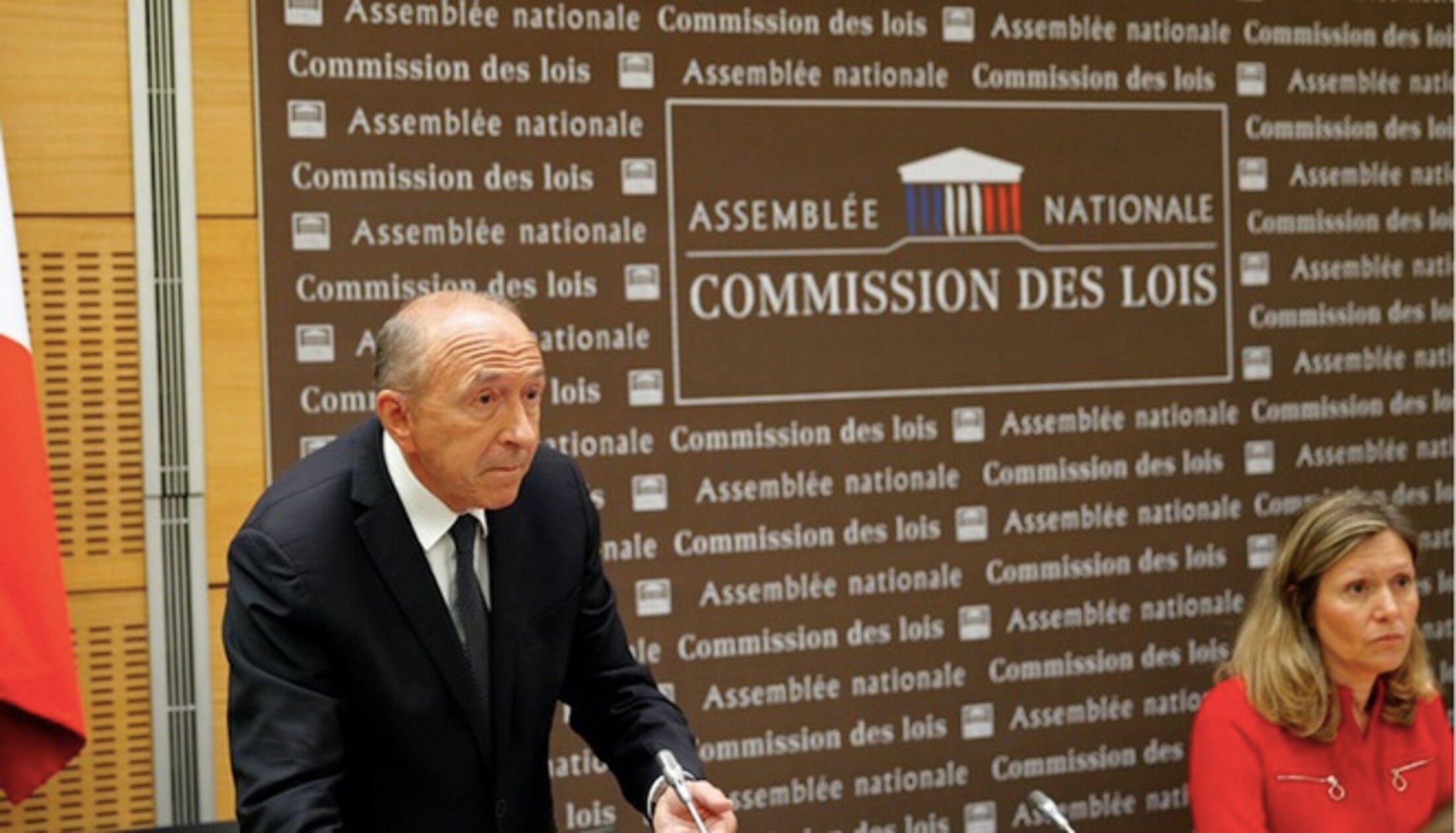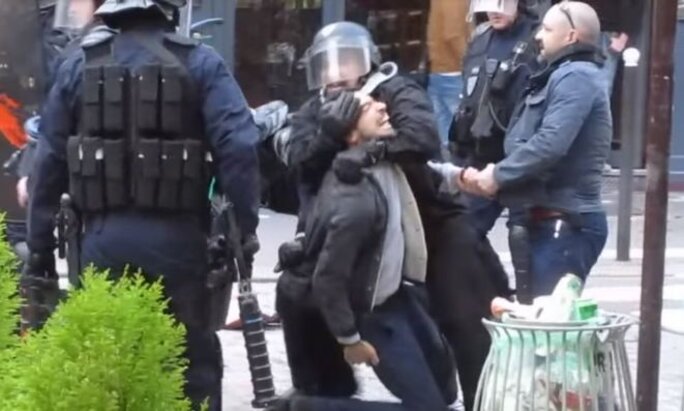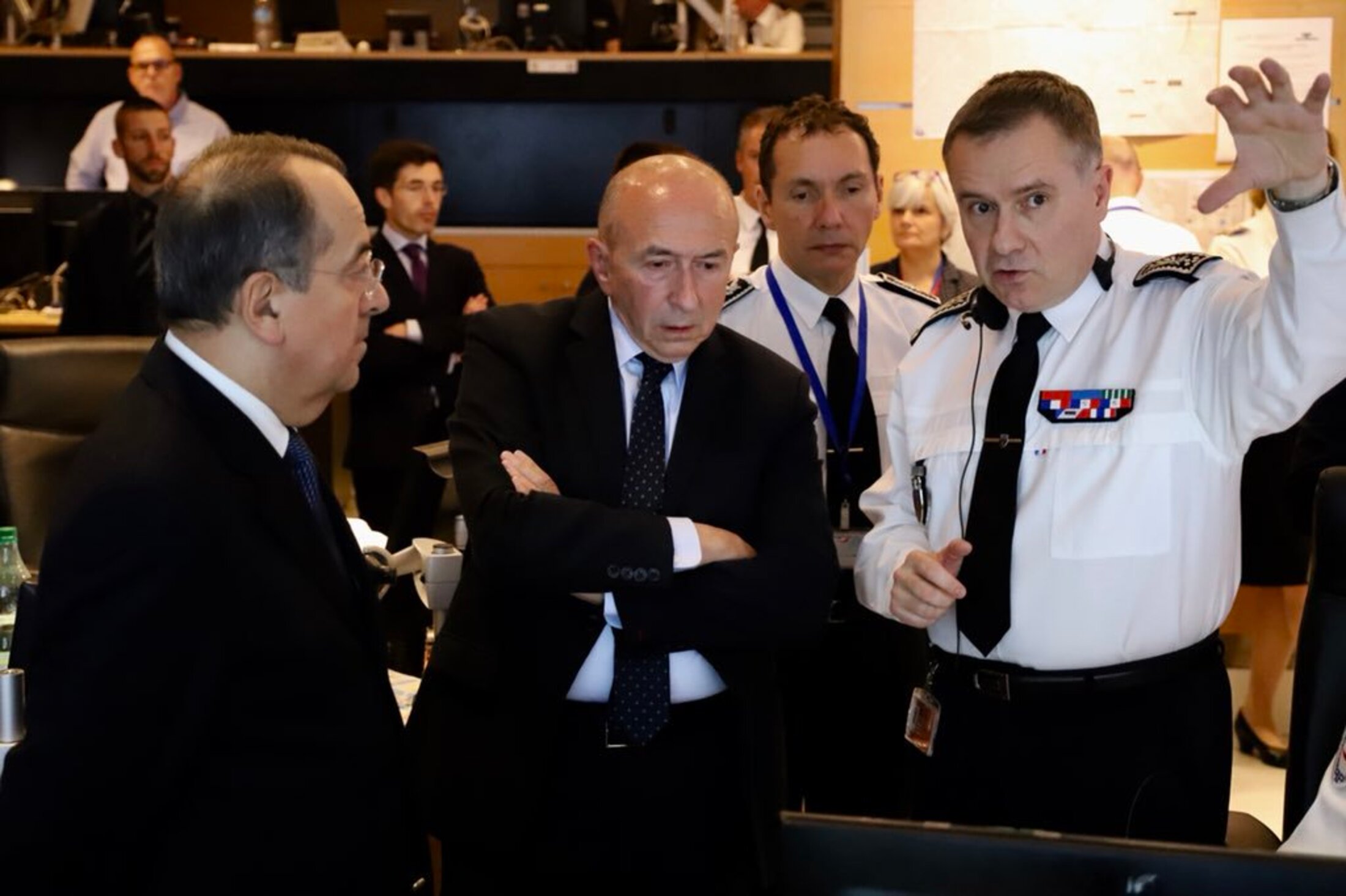French interior minister Gérard Collomb on Monday confirmed that he was made aware on May 2nd of video footage showing President Emmanuel Macron’s chief personal security aide Alexandre Benalla beating up a May Day protestor in the presence of police 24 hours earlier, but failed to alert the justice authorities of the events because the case was in the hands of the presidential office.
Collomb was speaking before a parliamentary committee of inquiry set up to establish the still unexplained circumstances in which Benalla, who has no police mission, was able to join crowd control officers in Paris on May 1st wearing police insignia and commit the vicious assault without any attempt by police who were present to restrain him, and why it took media revelations more than two-and-a-half months after the events before an investigation was launched. Benalla was officially present with police at the May Day marches as an “observer” of crowd control operations, with no authority to become involved in police actions.

Enlargement : Illustration 1

After Collomb’s appearance before the MPs on Monday it was the turn of Paris police prefect Michel Delpuech to appear before the committee, when he told the panel that he had been unaware on May 1st of Benalla’s presence at the scene of the marches. He also denounced the violent events involving Benalla as being “reprehensible personal excesses, to a backdrop of unhealthy 'pally' relations”.

Enlargement : Illustration 2

Both men have testified that they knew nothing of the arrangements for Benalla to accompany police during the May Day marches, and exactly who arranged for his presence, officially as an 'observer' remains unclear.
Benalla, 26, was this weekend formally placed under investigation for the violence, along with an associate also filmed at the scene, Vincent Crase, an employee of Macron’s LREM party who was illegally carrying a gun at the time. The two men, both civil reservists of the gendarmerie but who have no police powers, have known each other for some while, and Crase carried out occasional and so-far unspecified missions for the presidential office, the Élysée Palace.
On Friday, the Élysée announced it had begun dismissal proceedings against Benalla.
The May 1st events were only made known publicly after French daily Le Monde published some of the video footage on its website last Wednesday evening, which prompted the Paris prosecution services to open a preliminary investigation which was transferred this weekend to an independent magistrate now leading a full judicial investigation which will decide if charges should be brought.
Along with Benalla and Crase, three high-ranking police officials have also been placed under investigation for illegally handing Benalla, at his request, CCTV footage of the events at the place de la Contrescarpe, a small square in the French capital’s Latin Quarter. Meanwhile, an internal police inquiry has been opened by the unit dedicated to investigating suspected malpractice by serving officers, the IGPN.
The Monday hearings of the cross-party parliamentary inquiry were hurriedly announced this weekend under pressure from opposition Members of Parliament (MPs), and as new revelations continued to emerge in the media. On Friday, Mediapart published a new video (see immediately below) of the events on the Contrescarpe square which shows Benalla organising the arrest of the man he beat up, with the complicity of senior police officers.
In another video obtained by Mediapart, Benalla’s victim, after the presidential aide organised his arrest, can be seen being severely beaten again, this time by riot police, who also attack his female companion. The shocking footage (see below) begins with images of Benalla (white hood and helmet) and Crase (with sun glasses on his closely shaved head) forcefully moving away members of the public at the scene.
Benalla, who acted as a bodyguard and security planning official for Macron during his election campaign but who has no professional experience with official security agencies, was appointed as the president’s principal private security advisor immediately after his election in May 2017. The continuing revelations have established that Benalla, considered until now as one of the president’s close inner circle of most trusted aides, wielded exceptional power and influence, including with the police authorities.
Macron, meanwhile, has made no comment on the scandal since it errupted last Wednesday, and on Monday his staff announced he would not take part in a scheduled public appearance this week with crowds of spectators watching the Tour de France cycle race. His silence has only served to raise further speculation about his own role in what the French media have dubbed 'the Benalla affair'.
One of the questions central to what is the most serious crisis for Macron since he came to office last year, is why, after the president, his cabinet chief, the interior minister and other officials were made aware of Benalla’s thuggish behaviour on May 1st, no-one alerted the justice services to the serious offences he was captured on video committing. The events were kept strictly confidential and, after Macron’s cabinet chief was on May 2nd made aware of the events, Benalla was handed a disciplinary measure of a suspension from his duties, without pay, of just two weeks.
Speaking before the parliamentary commission on Monday, interior minister Gérard Collomb said it was at the beginning of the afternoon on May 2nd that he was informed, by his own cabinet chief, “of the existence of a video showing the violent events at the place de la Contrescarpe, of the implication of Mr. Benalla in these events”, but that because his ministry had that day informed the Élysée Palace, Collomb decided that it was his “hierarchical authority” – the Élysée – “to take all the necessary measures, on an administrative level as also on a judicial level”.
All of those with knowledge of what Benalla did are faced with the repeated question, raised in the media as also by the parliamentary commission of inquiry, of why they did not respect Article 40 of the French penal code which requires “every constituted authority, every public officer or civil servant” who has knowledge of a crime or offence “to advise without delay the public prosecutor”.
Collomb told the MPs committee on Monday that after he was informed on the evening of May 2nd that disciplinary measures had been taken against Benalla (a two-week suspension from his duties) he thought “that the reported events were taken into account at the appropriate level”.
“And so,” he added, “I no longer occupied myself with this matter.”
Concerning Benalla’s precise role at the Élysée Palace, Collomb said he knew “nothing” about his activities as security advisor. The interior minister said he had “come across” Benalla during Macron’s election campaign (former socialist Collomb, who served as mayor of the south-east French city Lyon, was one of Macron’s high-profile political supporters), “but during an electoral campaign there are dozens of bodyguards, there are also policemen present”.
But under questioning on Monday, Collomb agreed that he had met Benalla in the command centre of the Paris prefecture, from where the public order operations during the May Day marches had been coordinated, just a few hours after the violent events involving Benalla on the place de la Contrescarpe.

Enlargement : Illustration 6

Paris police prefect Michel Delpuech, questioned by MPs later on Monday afternoon, confirmed he also seen Benalla – an Élysée official with no police brief – present in the command centre, which he said caused him “surprise, astonishment”. Delpuech added that Benalla told him “I was out in the field”.
Collomb’s visit to the command centre was in the context of a day of high tension surrounding the traditional May Day marches through the French capital, when small groups of so-called “black-bloc” extremists attacked and damaged commercial property at a strategic point of the march, close to the Austerlitz railway station. Alexandre Benalla was photographed in the vicinity of the disturbances, wearing a police ID armband. It also appears that Benalla was in possession of a police walky-talky using a system called Acropole, which would have allowed him to enter into contact with the high command of the Paris police.
At the time, president Macron was beginning a three-day official visit to Australia, where he was informed on May 2nd by his cabinet chief, Patrick Strzoda, of Benalla’s violent behaviour at the place de la Contrescarpe.
Under questioning by MPs on Monday afternoon, police prefect Delpuech insisted he had no part in authorising the presence of Benalla or Crase with police units on May 1st. He said that those requests to accompany police operations as an observer and which might appear “sensitive” would be submitted to him. “I was never, I say ‘never’, approached by whoever on the subject,” he added.
Asked why he did not prompt an IGPN internal police investigation into the events involving Benalla, Delpuech said it was because the IGPN “has no competence for persons who are not from the national police”. Questioned on why he did not inform the justice authorities about Benalla’s thuggish behaviour, as required by law, he insisted that he was not “the first to be informed”, and that it was not for “the prefect” to take the initiative once the problem had been “taken up by the appropriate hierarchical level”, in a thinly veiled reference to Emmanuel Macron’s cabinet chief, Patrick Strzoda.
-------------------------
- This article includes reporting from two Mediapart articles published in French, which can be found here and here.
English version and additional reporting by Graham Tearse


